2014 Porsche 911 Turbo Vs Audi R8 V10 Plus

If you live in the northeast like I do, you’ve just suffered through one of the worst winters in a very long time. The spring hasn’t been much better, either, but with most of the snow now melted, we couldn’t wait to get out to our local road course and officially declare winter closed and track season open.
And what better way to do exactly that than in two world-class sports car that not only let you have big-time fun in the dry and warmth of summer, but also in the less idyllic conditions of those other three seasons. In fact, both the Porsche 911 Turbo and Audi R8 V10 Plus are equipped with all-wheel drive systems that mean you can truly enjoy them 365 days a year. As proof of that fact, both our test mules were still rolling on Pirelli winter tires.
That may sound like a giant buzz kill to some of you, but with ambient air temps below 50°F and a fair bit of snow melt running across the front straight and some big puddles elsewhere on the track, we weren’t complaining about the winter tires. Nor were we complaining about the fact that the sun was shining and we had the track all to ourselves. Time for some epic launch control battles!
Get the Flash Player to see this player.
Head-Snapping Acceleration
Normally when people use that tired, old cliché about a car accelerating so hard it snaps your head back, I do my best not to snicker. Either people have really weak neck muscles, or they’re just prone to exaggeration when it comes to describing their car’s performance.
To be fair, I have actually driven a few cars that literally had me looking at the headliner when I launched it hard enough, the Nissan GT-R immediately comes to mind. But nothing, not even the GT-R, could prepare my brain for what the 911 Turbo was about to do to it. Lined up against the R8 V10 Plus on the back straight, Road Test Editor Mike Schlee (in the Audi) and I both held the brake and throttle pedals to the floor to engage each car’s launch control system, and once Editorial Director Colum Wood did his best Rich Christensen drag race arm-drop, I slipped my left foot off the brake pedal and held on tight.
Turns out the 911 Turbo has a very nice suede headliner and a glass slide/tilt sunroof. Plus my neck muscles are a lot weaker than I thought. That, or maybe it was just the 524 lb-ft of torque produced by the 911’s twin turbocharged 3.8-liter flat-6 when in Sport Chrono overboost mode along with seemingly unbreakable amounts of traction that led to the unnerving sensation that my brain just moved in my skull. After a couple of these launches I actually had to hand the keys over to Colum (both still use a traditional ignition key, strangely enough), because I was officially motion sick. If that’s not the definition of head-snapping performance, I don’t know what is.
It didn’t matter who was driving or how many times we played the arm drop game, the outcome was always the same: 911 Turbo walking away from R8 V10 Plus. By the end of the straight the Porsche would consistently pull a car length or two ahead, but the Audi is certainly no slouch, blasting from 0-60 MPH in just 3.3-seconds and reportedly having a slightly higher top speed than the 911 (197 MPH vs. 195 MPH), presumably from its 30 extra ponies (550 vs. 520) and a slightly taller top gear. You might be thinking the R8’s sleeper shape also helps its top speed, but the 911 Turbo actually has the lower coefficient of drag at 0.31 compared to the R8’s 0.35.
Mike didn’t seem to mind losing all these drag races, though, probably because of the spectacular noise produced by the R8’s Lambo-sourced V10, not to mention the “I feel like Ironman” ego boost that kicks in once you slide into the Audi’s supportive bucket seats and carbon-everything interior. There might even be a fake Tony Stark driver’s license in the glove box, or at least the speeds the R8 V10 Plus is capable of achieving are certainly worthy of superhero status.
A Subjective Track Test
Normally I’d be kicking into my schpiel about lap times and cornering g-forces right about now, but because of the winter tires and variable track conditions, I left the data acquisition system in my duffle bag. Instead, we simply put each car through it’s paces to get a feel for how they behaved as we approached the limit of adhesion, which was fairly easy to do given the low grip tires and extremely green track surface. We also wanted to get a sense of how the character of each machine changed as we played with the various Sport modes available.
First of all, both cars are incredibly powerful (duh!), possess absolutely faultless braking systems (the Porsche’s steel brakes having slightly less initial bite than the Audi’s gargantuan carbon ceramics, but both were completely resistant to fade), provide instantaneous shifting via their dual clutch gearboxes, and as a result force your brain and vision to adapt to a sensation of speed that feels surreal the first lap or two.
Although conditions weren’t right to take a run at the R8 V10 Plus’s current track record (1-minute 18.4-seconds, recorded last summer), I would very much like to take a crack at that number in a 911 Turbo this summer, because its ballistic performance during our impromptu drag races was well matched by its handling balance and grip around a dirty and damp race track. I can only imagine how fast it would be on summer tires and a nicely rubbered in surface.
Porsche 911 Turbo: a Grip Machine
But even on the less responsive winter tires, I was particularly impressed by the 911 Turbo’s turn-in response, its willingness to change direction no doubt being aided by Porsche’s unique rear steering system that turns the rear wheels the opposite direction to the front wheels at lower speeds to help get the car turned quicker and turns the rears the same direction as the fronts at higher speeds to provided added stability. I was a skeptic about rear steering prior to this test, but I’m now a believer, because this 3,516-lb sports car was carving corners with the same precision and balance as its much lighter and mid-engined little brother, the Cayman S.
And just like the less powerful Carrera 4S we track tested last summer, the Turbo has absolutely stunning amounts of grip once you get back on the gas, thanks in part to its active center differential, but what I still struggle to comprehend is how Porsche found a way to make a rear-engined car feel so well balanced and easy to adjust mid-corner (a longer wheelbase and wider track than previous Turbo models certainly helps).
You can put the 911 Turbo into a nice little slide and then stomp on the throttle once you’ve clipped the apex and let the potent combination of AWD, torque vectoring, and several other traction enhancing systems (PASM, PSM and PDCC among them) help catapult you down the straights with a velocity I wouldn’t have thought possible. This car really does redefine fast, and it makes its speed extremely accessible thanks to the seamless integration of its many active control systems.
Audi R8 V10 Plus: Tricky at its Limits
By contrast, the R8 V10 Plus was struggling to find grip on turn-in. It’s narrower front tires were being overworked in the braking zones and then the initial phase of corner entry, but thanks to the Audi’s mid-engine balance the rear end would soon begin to follow the front. But once it’s time to transition back onto the throttle, things can start to get a bit tricky with the R8, since it behaves very much like a RWD car (sending up to 85% of available torque to the rear), so you have to use the throttle judiciously to avoid any unwanted tail-out antics.
Because of its willingness to power slide, the Audi is undoubtedly the more challenging of the two to drive at the limit, but that may also make it more rewarding to some. Although it too has highly sophisticated torque vectoring, the R8 feels more analog than the Porsche, more exotic both in terms of design and at-the-limit handling balance. This can be viewed as either a bit scary or rathr endearing (I prefer the latter, but leaving traction control on is a good call for all but the most experienced drivers). Regardless of perspective, the R8 demands respect and a light touch around the race track, where the 911 Turbo is far more forgiving of overzealous inputs.
Beauty And The Beast
Although the 911 Turbo proved to be the quicker and more usable of the two in the less than ideal conditions we had to work with, there’s little doubt which of the two turned the most heads on the street. Mike had the R8 for the week and reported more than a few instances of cars turning around to follow him just so they could get a closer look at the Audi. That’s a pretty remarkable reaction in this day and age, and although the 911 Turbo is certainly an object of lust in its own right, Colum (who had the Porsche for the week) didn’t seem to have the same Pied Piper experience.
On the other hand, the Porsche is certainly the more practical of the two, having more cargo capacity and a 2+2 configuration that makes it possible to carry two adults and a child or two in the back. Plus the 911 Turbo has a more modern and spacious feeling interior, though I’m personally a sucker for carbon fiber so can’t help but love the R8’s aging yet still very special interior design.
Compare Specs
| Vehicle | 2014 Porsche 911 Turbo | Advantage | 2014 Audi R8 V10 Plus |
|---|---|---|---|
| Engine | 3.8-liter Flat-6 | - | 5.2-liter V10 |
| Transmission | 7-Speed PDK | - | 7-Speed Dual-Clutch |
| Horsepower | 520 hp | R8 V10 Plus | 550 hp |
| Torque | 487 lb-ft | 911 Turbo | 398 lb-ft |
| Weight | 3,516 lbs. | 911 Turbo | 3,660 |
| 0-60 MPH | 3.2 seconds | 911 Turbo | 3.3 seconds |
| Top Speed | 196 MPH | R8 V10 Plus | 197 MPH |
| Price | $163,820 | 911 Turbo | $187,590 |
Where the 911 feels more like an everyday road car inside (though an extremely nice one), the R8 really does give you more of an exotic car experience, thanks to its lower and more reclined seating position, flat-bottom steering wheel, and material choices. It should be noted, though, that 911 Turbo buyers do have virtually limitless options to choose from when configuring their own car, so its certainly possible to make the 911’s interior look and feel a lot more unique and special if you’re willing to spend the bucks to do so. God knows I’ve spent an embarrassing number of hours playing with the Car Configurator on Porsche’s website, building my dream car just in case my lottery numbers hit.
The R8 V10 Plus’s glamorous body style and sublime powertrain don’t come cheap, though. With a starting price of $179,645 with the 7-speed S Tronic dual clutch gearbox, it’s possible to run that number up into the $190,000 range with options like $5,000 diamond-stitching full leather package, $1,300 black Alcantara headliner and $1,800 Bang & Olufsen sound system.
The Porsche 911 Turbo is significantly less expensive upon first glance, with a base starting price of $148,300. But of course Porsche is legendary for enticing you to spend a little (ok, a lot) more with a wide range of optional extras, our tester having been equipped with the $3,500 Burmester high-end infotainment package, the $4,090 Sport Chrono package (a must!), and the $3,160 Porsche Dynamic Chassis Control package, all of which helped bring its price up to $163,820. Splurge on the $9,120 ceramic composite brakes and the $3,835 Turbo S wheels and you’re really getting into R8 V10 Plus territory.
The Verdict
As much as I love the supercar styling and soundtrack of the Audi R8 V10 Plus, the Porsche 911 Turbo is the true year-round sports car of the two. Its all-wheel drive system and active control systems make it the more tractable and enjoyable in a low grip environment, and even with Sport+ engaged and PSM turned off, it displayed impeccable balance no matter how hard I tried to get it to misbehave.
The 911 Turbo is a technological tour-de-force, its variable vane turbochargers and variable camshaft lift and timing giving it an impossibly broad torque curve, and yet it’s surprisingly willing to let you feel the chassis move around beneath you. There’s a balance of technology vs. driving feel here that I simply did not expect.
Yes, the 911 Turbo is easy to drive fast in part because of the high-tech wizardry going on in the background, but it’s still a true driver’s car that communicates very clearly through the steering, the pedals, and the seat of the pants, all of which makes it an absolute joy to hustle around a race track.
The non-racers on staff both wanted to take the R8 V10 Plus home, though. I preferred the added pace and practicality of the Porsche, but Mike and Colum both found the R8’s sexy sheet metal and glorious V10 song too strong an aphrodisiac to resist. And the thing is…they’re not wrong. Choosing the R8, especially when you consider the money at play here, does make a lot of sense for folks who appreciate the value of being seen in it as much as the driving experience itself. And lets be honest, the R8 V10 Plus delivers a world-class driving experience too, just a less forgiving one than the Porsche.
2014 Porsche 911 Turbo, 2014 Audi R8 V10 Plus
LOVE IT
- Astounding grip on a wide range of surface conditions
- Wide torque band and lots of it
- Perfect blend of technological assistance and underlying chassis balance
- Active aero makes engineers and racers swoon
- It’s an exotic car with German build quality
- V10 + 8,000 rpm = eargasm!
- Sheet metal makes women swoon
LEAVE IT
- Turbo badges alone don’t make the interior quite as special as I’d like
- Push on corner entry, tail-happy on corner exit – fun but not for the faint of heart

Some say he's closely related to Bigfoot and that he's a former Canadian Touring Car Champion. All we know is he's the AutoGuide Stig! A thesis defense away from being your intellectual superior he's a professor of vehicle handling dynamics. The part-time touring car and time attack racer is faster (much faster) than your average auto journalist.
More by Dave Pratte

















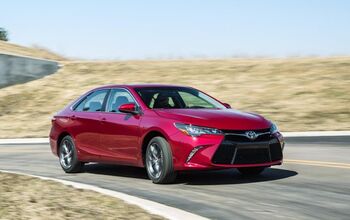



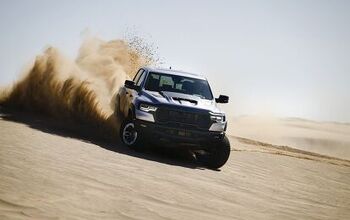
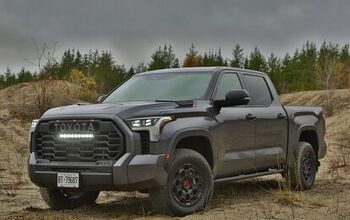

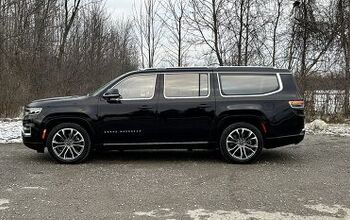
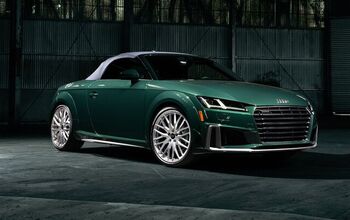

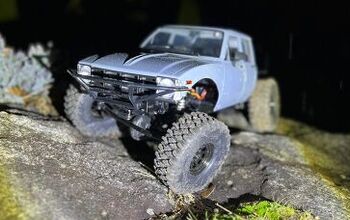
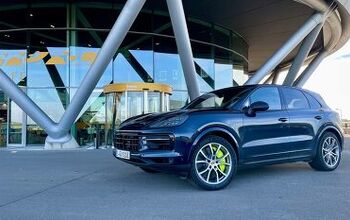
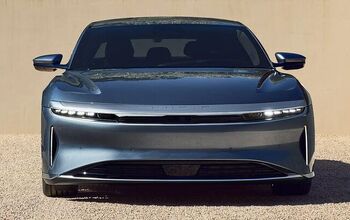

Comments
Join the conversation
I'd like to try the R8 :) I had owned various 911s through 30+ years so, I like the R8 look :)